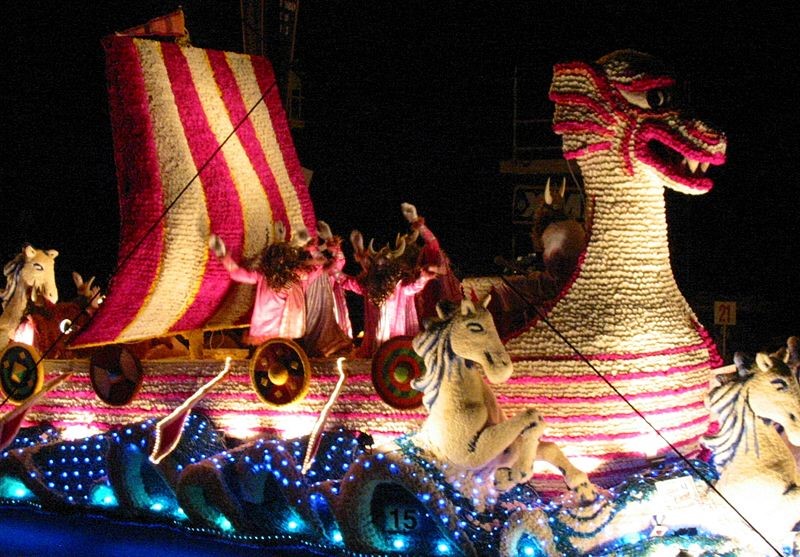
10 October, 2024

Tom Birkett
Posted: 23 August, 2018

As Cultural Heritage Week continues, we look at how crowdsourcing can be exploited for heritage research and education. Dr Tom Birkett is the lecturer in Old English at University College Cork and author of a new retelling of the Norse Myths for Quercus. In 2015 he was awarded a New Horizons grant from the Irish Research Council to run the World-Tree Project: An Interactive Digital Archive for the Teaching and Study of the Vikings.
The Vikings are everywhere at the moment. Blockbuster series such as History’s Vikings and immersive video games such as God of War have brought them to our living rooms. There are Viking festivals and new Viking experiences popping up all the time (including the new Viking Virtual Reality Adventure in Waterford). There’s a new Viking Voyage ride at Tayto Park; a new Viking theme-park across the water in Norway, as well as a college programme for learning Viking crafts. The strong image of the Vikings is exploited in advertising and in tourism, and they have become an important brand, helping to sell everything from cruises to craft beer.
Though the Vikings are undoubtedly in vogue at the moment, leading to certain images (such as the ubiquitous horned helmet) being repeated time and again, there are also national and local flavours to the way we imagine the Viking past. Even within Ireland, cities such as Dublin, Waterford, Limerick and Cork have very different ways of celebrating their Norse roots, and different groups – from re-enactors to followers of Viking metal – have their own particular reasons for engaging with the Viking past. In Korea, Vikings are all-you-can-eat buffets, in Minnesota they’re a football team, in parts of Scandinavia a national trademark presented to the world. There are a countless overlapping images of the Vikings circulating in our contemporary world, many of them having little to do with the historical Viking Age.
The World-Tree Project which I ran at UCC aimed to better understand this legacy, and the different ways this reimagining of history impacts on our cultural world and intersects with scholarship. Because there are so many different examples of modern Vikings – and so many different sources for historical information about the Vikings spread across Europe – it made sense to involve the wider community in this research. The more people involved in the project, the more data we could collect and the more comprehensive the picture that would evolve. Cultural heritage crowdsourcing has been used very successfully before, particularly by libraries, galleries and museums, to harness community knowledge and to carry out tasks that can’t be managed by researchers working alone. We also knew that community collection projects can be run online, allowing access to a large online community, and so we scaled these methods up to see if they could be successfully applied to an international field such as Viking heritage. This involved approaching contributors from four different countries to work with us and send in examples of the Vikings from their local area.
The materials people submitted ranged from photographs of local Viking advertising or Viking-themed products, to videos of re-enactment or performance. These materials were supplemented by educational materials collected from academics (including handouts, translations, and guides to the Old Norse language) and by linking to different digitised collections from across the four countries. This allowed us to create an online archive at www.worldtreeproject.org consisting of over 4000 individual items which could then be used to interpret the modern image of the Vikings, and to create educational resources about the Viking past aimed at different audiences.
We created twelve interactive exhibits in total, on themes such as the Viking Brand, Viking Women, and Viking Ships – drawing on all the materials that had been made available. We learned that often communities are quite comfortable holding multiple images of the Vikings in mind: a rounded picture of a historical culture, the popular image of bearded barbarians, the positive image of entrepreneurship and adventure so beloved by companies, as well as more diverse meanings arising from exposure to local versions of the Vikings or strong associations with heritage or local identity. We also learned that the public – or multiple publics from across Europe – are willing to work together with researchers to address big questions, but that this always needs to be a two-way exchange: scholarship has to give something back, and we hope that in creating a lasting, free (and accessible) resource on the Vikings collected from the public, we have done just that.
Disclaimer: The opinions expressed in our guest blogs are the author’s own, and do not reflect the opinions of the Irish Research Council or any employee thereof.